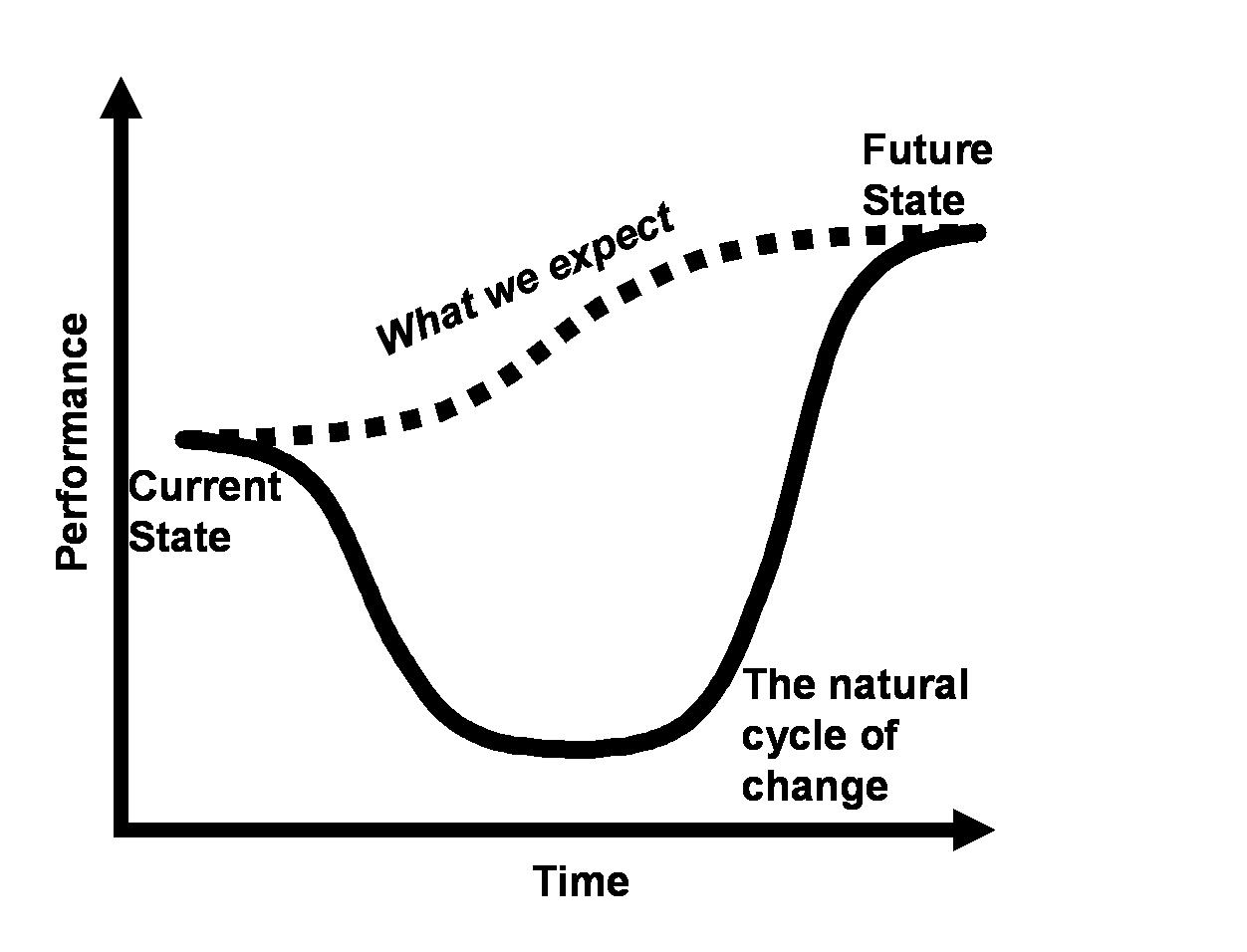The Shortest Distance Between Two Points is NOT a Straight Line
The dotted line in the drawing below shows the expectation that people might have with regard to a transition from a current state to a future one. The fact that we perceive this transition in this way is caused by the fact that we look at organizational changes purely as a mathematical exercise (the shortest distance between two points is a straight line). 
However, it is a false expectation and when reality settles in, we are puzzled by the emotional responses to the change and terrified by the delays and the drops in performance. But we are only witnessing nature having its way.
Ignore the Emotional Side at Your own Peril
Emotional and psychological factors ultimately decide the duration and success of the organizational change. Whenever people are involved, performance will drop and resistance will come. Either we ignore it until the last minute or we accept it as a given and incorporate it in our approach.
Impatient Executives
The members of executive team that decided to deploy the organizational change are the first to wrestle with their incompetence to shape a crystal clear future state. However, by the time they have, they are on the top right hand point of the drawing and they have difficulties understanding why it takes so long for all the others to get there. Executives tend to dismiss the time it took for them to get there from their memory.
Next in line is the project team responsible for the implementation of the change. They will go through exactly the same cycle when they find out they are supposed to become ambassadors by the time they go live with something they hardly know about right now.
Stay Cool
It is not an easy thing to go through the dynamic of emotions and at the same time keep a clear perspective. Eventually, change gets personal, and in an organizational context we are not used to this for the following reasons:
– We often don’t know how to deal with strong emotions in our organization. We think they should be over and done with before they started.
– We don’t trust one another to deal with emotions constructively.
– We know something must happen, but we don’t know how.
– We are afraid of our own emotions because we are insecure in ourselves.
The Only Way Out is Through
By the time your target group is confronted with the end of the world as they know it, it may look like the whole organization is on fire (execs are impatient, project team is half way through the cycle and the target population is going down at a fast pace). That is fine, as long as you are prepared for it and incorporated a good dose of common sense and participation in your approach.
The bottom line is that we need to go through the rollercoaster of leading ourselves through our own changes in order to have the respect and authority to lead others through the organizational change.

